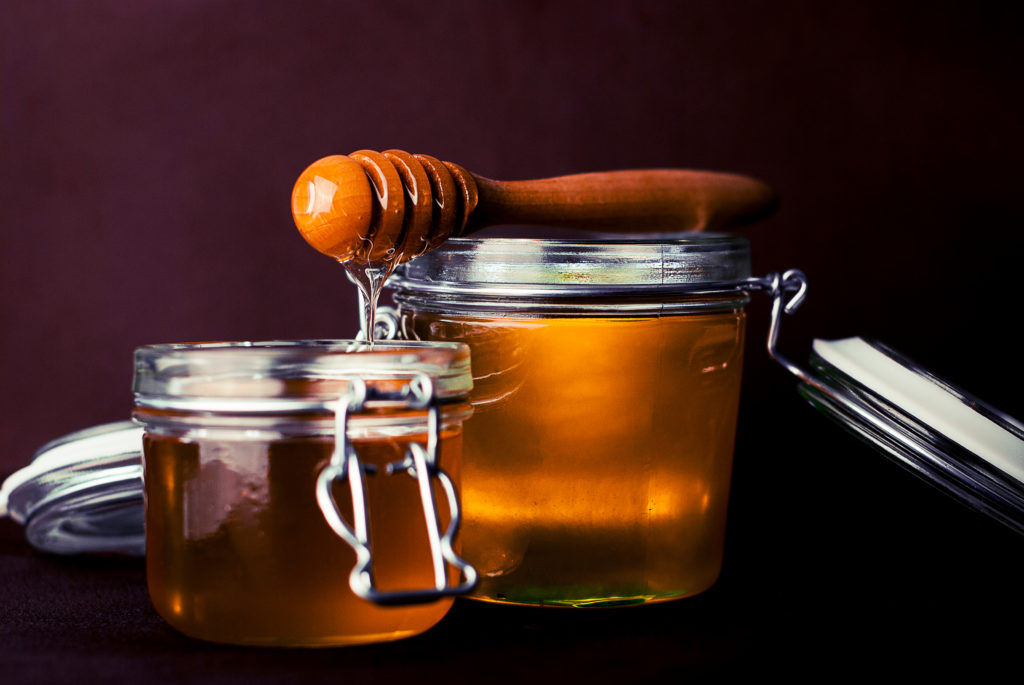It’s the time of year now when viruses are circulating left, right centre. And the go to remedy in the kitchen is honey. Honey is a good alternative to sugar to sweeten food and drinks. I personally wouldn’t choose the bog standard honey on supermarket shelves. Go for manuka honey or a blend of manuka and wild honey or raw organic honey. These have more medicinal properties. The different grading levels of manuka honey can be confusing.

The most common marker for Manuka honey is MGO (methylglyoxal). It is a toxic compound with antibacterial properties and is measured in the UMF and MGO grading systems. UMF which stands for Unique Manuka Facor is being phased out for a marker of honey and being replaced with MGO. Manuka honey comes from the Manuka tree native to New Zealand. While most honey contains small amounts of MGO (typically 0 to 7mg/kg), Manuka honey can contain more than 100 times the MGO found in normal honey. What makes methylglyoxal special is that it’s resistant to heat and it does not degrade when exposed to saliva and blood like hydrogen peroxide does making it much more effective.
Below I’ve outlined the equivalent so you know the different potencies when selecting the honey and to what it was before when measured by UMF. The higher the MGO, the pricer the honey becomes. From my experience MGO 83+ to MGO 400 works well. Nonetheless go for what you can afford.
MGO UMF EQUIVALENT MGO 83+ 5+ MGO 100+ 6+ MGO 250+ 10+ MGO 400+ 13+ MGO 550+ 16+ MGO 700 18+ MGO 850 20+ MGO 1000 22+
One of the good things about using MGO levels as a grading system is that it’s straightforward. It’s relatively straightforward for any company to get their honey tested and put the results on their label. The downside is that there is no third party oversight that ensures the MGO number on the label matches the MGO levels of the honey in the jar. It is up to the company to test their own honey and put the results on the label.
One thing to note is that the presence of methylglyoxal in honey doesn’t necessarily guarantee that it’s genuine Manuka honey. Many different kinds of honey have low levels of methylglyoxal that don’t provide any antibacterial benefit. If you’re buying lower grade honey (less than MGO 100) there’s no guarantee that the honey is primarily Manuka honey. This ends up being a less important for higher grades above MGO 100+ as the honey likely wouldn’t have such high levels of MGO if it wasn’t pure Manuka honey.
For wellbeing: Dry throat, coughs, sore throat, oral health.
Topical use: Acne, inflamed skin, dry or irritated skin

